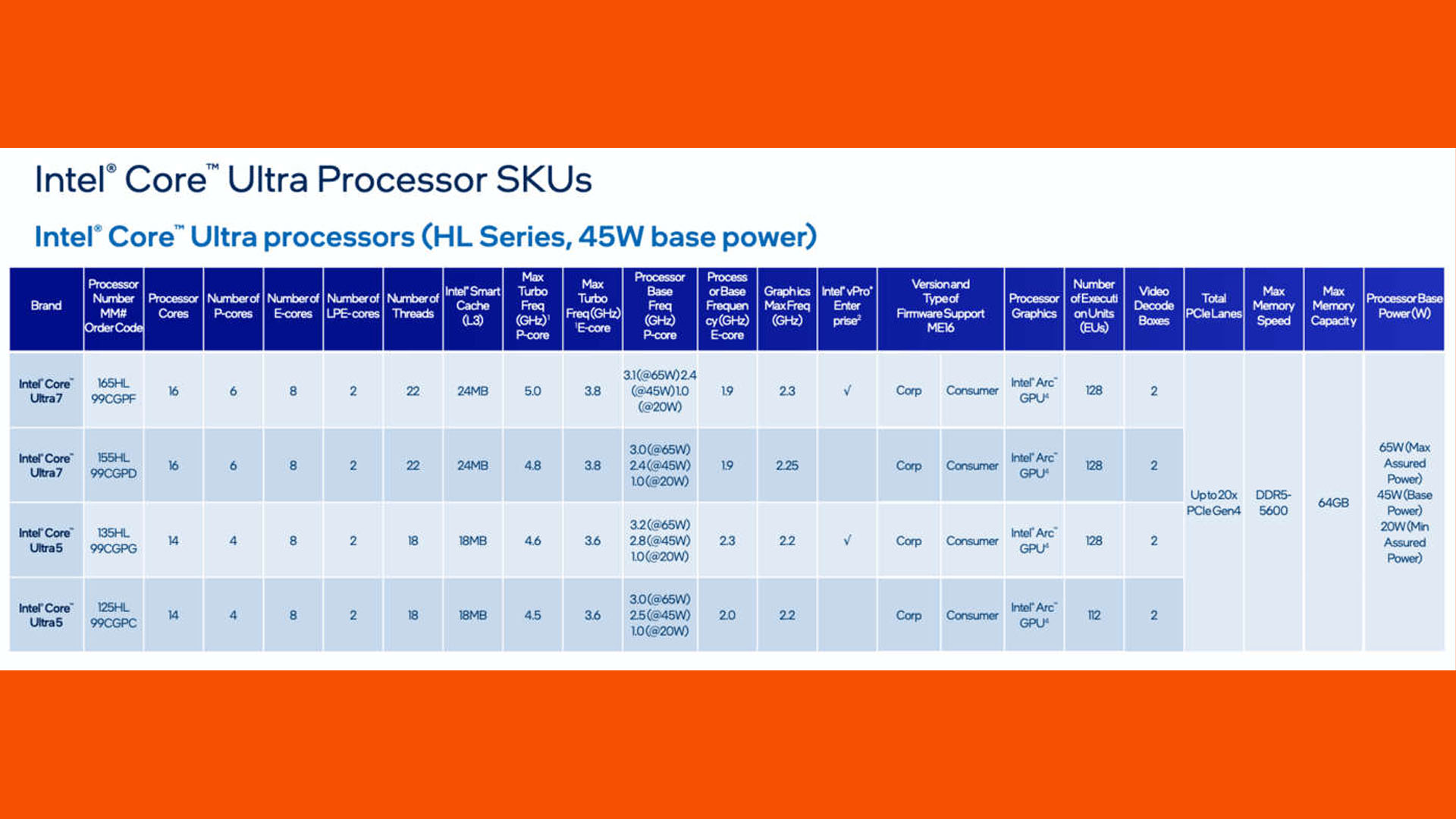Intel has just announced the first CPUs that will use the company’s next-gen LGA1851 socket, but rather than this heralding an early arrival of Intel’s next gen Arrow Lake chips, these new chips are in fact desktop Intel Meteor Lake CPUs, which are based on the company’s Meteor Lake-PS architecture.
Meteor Lake was supposed to be a big deal for Intel, with the new architecture ushering in a new chip design style, using multiple smaller chiplets or ’tiles’ to create each CPU. It also used a new smaller 7nm manufacturing process, compared to the 14nm process used on the previous three generations of Intel‘s best gaming CPUs. However, the launch didn’t quite go to plan, and Intel eventually only released the designs in a mobile form, until now.
So yes, Intel is finally launching a proper desktop variant of Meteor Lake, and moreover, this occasion marks the first desktop CPUs to launch that support Intel’s new LGA1851 CPU socket. We didn’t expect to see this platform launch until the arrival of Arrow Lake CPUs later in the year. There is one big catch when it comes to this desktop Meteor Lake CPU launch, though, which is that you won’t be able to buy these CPUs through normal retail outlets.

On the plus side, you wouldn’t want to buy them for gaming anyway, as they’re primarily aimed at use in ‘edge’ AI computing setups. These are the types of systems you’ll see powering AI-enhanced point-of-sales machines, and all manner of other embedded, or small server-type, systems that need the extra horsepower of Intel’s AI-focused neural processing units (NPUs).

This lack of a focus on making gaming-centric, truly powerful general-purpose desktop CPUs is reflected in the omission of any Intel Core Ultra 9 variants, although there are several quite powerful Ultra 7 versions with as many as six P-Cores and 8 E-Cores. Clock speeds also hit as high as 5GHz, which is a far cry from the 6.2GHz of the Intel Core i9 14900KS, but will still make for a speedy chip.

Notably, none of these new chips has a TDP higher than 65W, with several dropping as low as 12W, highlighting the low-power, constantly-on usage scenarios targeted by these chips.
As for motherboards with the LGA1851 socket, the platform for these chips will allow motherboards to support 5600MHz DDR5 memory, two PCIe Gen4 SSDs, and four Thunderbolt 4 devices. However, there’s no chipset support for Thunderbolt 5, Wi-Fi 7, or PCIe Gen5.
The new desktop Intel Meteor Lake chips aren’t expected to actually be available until Q4 2024, which means some time from September onwards. That also coincides with the expected launch of Arrow Lake desktop CPUs for gamers, according to the latest rumors.
